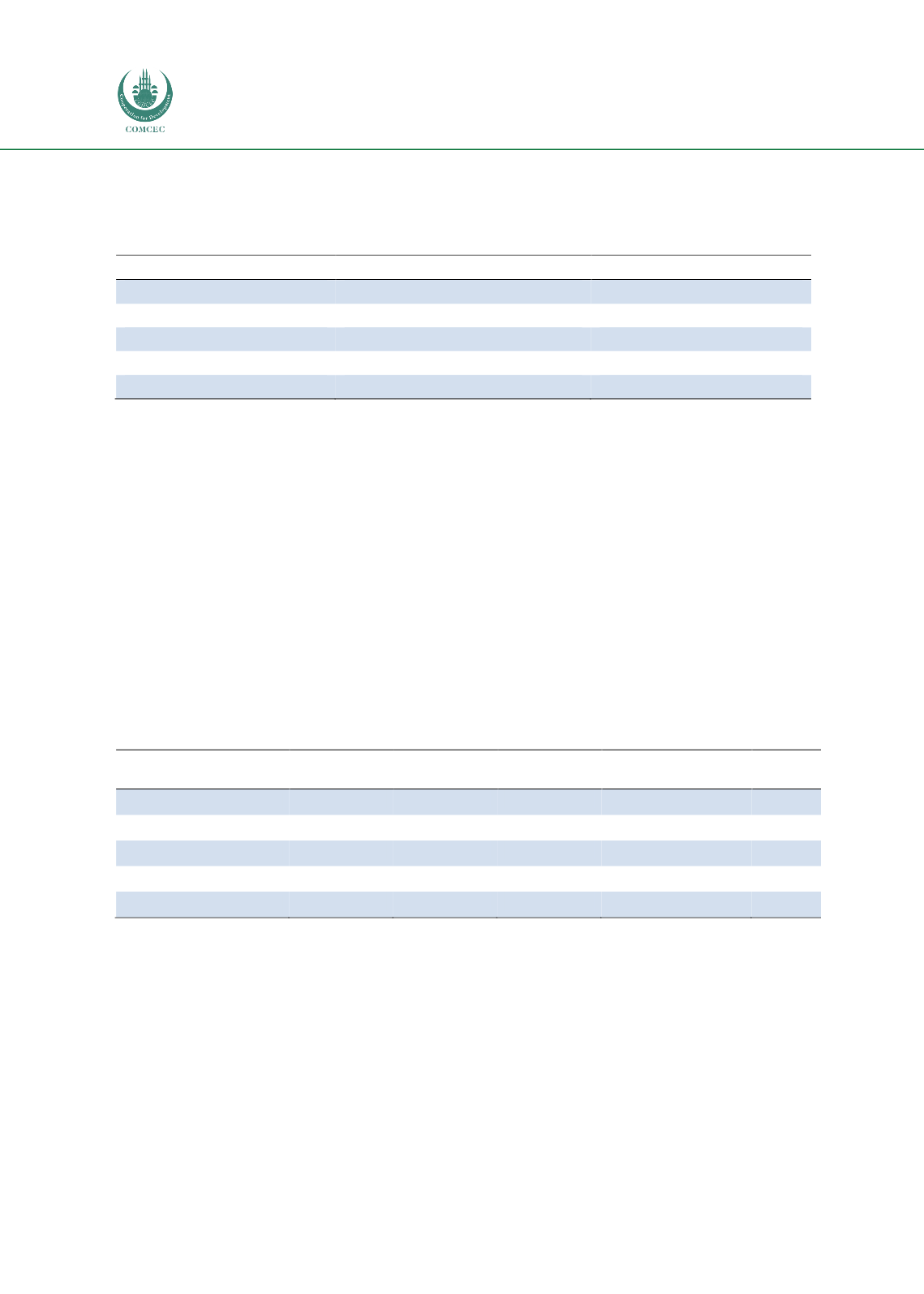

COMCEC Transport and Communications
Outlook 2017
48
sector had the largest share (47.4%) in terms of number of PPI projects and it was followed by
transport sector (22.4%).
Table 15: Distribution of PPI projects by infrastructure sectors (1991-2016)
Sectors
Number of PPI projects
Percentage shares
Energy
5.217
34,5%
Telecom
6.734
44,5%
Transport
2.078
13,7%
Water and sewerage
1.104
7,3%
Total
15.133
100,0%
Source: Author from the World Bank PPI Database
Table 16, which presents the distribution of PPI projects by their PPI-types during the 1991-
2015 period shows that some variations in PPI-type exist depending on the characteristics of
individual sectors. Table 16 shows that greenfield projects have been the most frequently used
PPI type in energy and telecom sectors whereas transport sector mostly adopted brownfield. On
the other hand, both energy and telecom sectors applied divestitures more frequently than
transport and water and sewerage sectors in both absolute and percentage terms. In addition,
water and sewerage sector used management and lease contracts more than any other sector
did. Among various PPI types, greenfield projects have been the most common form of PPI
investment in the transport sector with a share of 62.4% whereas 22.9% of the transport PPI
projects has been implemented through brownfield schemes. Divestitures andmanagement and
lease contracts had relatively lower shares, i.e. 10.6% and 4.2%, respectively.
Table 16: Distribution of the PPI projects by PPI-types (1991-2016)
Sector
Brownfield Divestiture
Greenfield
project
Management and
lease contract
Total
Energy
828
1.031
3.291
67
5.217
Telecom
50
1.236
5.411
37
6.734
Transport
1314
87
582
22
1.103
Water and sewerage
450
56
425
172
15.059
TOTAL
2.642
2.410
9.709
298
5.217
Source: Author from the World Bank PPI Database
The changes in the number of transport PPI projects by geographic regions in the 1991-2016
period are presented in Figure 26. In terms of using PPI models in transport projects, South Asia
- with an increasing trend in recent years - and Latin America and the Caribbean are the two
best performing regions whereas Middle East and North Africa and Sub-Saharan Africa
remained at the bottom of the figure. Another interesting feature of the figure is its fluctuant
pattern as a result of regional and global crises which proves that PPI/PPP implementation has
been quite sensitive to economic stability.
















